Ranking College Basketball's Most Physically Imposing Lineups in 2015-16 – Bleacher Report It’s because of physically imposing big men that programs like Maryland, Arizona and North Carolina rank among the nation’s best projected college basketball teams in 2015-16. These aren’t necessarily the best rebounding teams, the best shot-blocking teams or the teams most likely to lead the nation in flagrant fouls committed. Rather, these are what we consider to be the 10 best and biggest rosters in the country. Some of these big men are far more likely to attempt a three-pointer than wrestle for a rebound, but height reigns supreme on this list. To meet the size requirements, teams need to have either three projected starters who are 6’8″ or taller or four projected starters who are 6’7″ or taller, with heights listed on ESPN’s rosters serving as the source for that data. All others were immediately removed from consideration, though a few did receive honorable mentions. In ranking our finalists, each team was placed on a coordinate plane with the X-axis representing height and the Y-axis representing projected NCAA tournament seed—a No. 1 seed would actually be a 10 on the chart, while a No. 10 seed would only be one step above the horizontal axis. The further northeast a team landed on the plane, the higher it ranked on our list. Notre Dame Fighting Irish One of the few teams in the country with a 6’5″ power forward, Notre Dame isn’t particularly close to meeting the necessary criteria. However, Bonzie Colson is a wrecking ball, Zach Auguste is an underrated beast in the paint and V.J. Beachem is a 6’8″ small forward who might be the team’s best three-point shooter. Don’t expect this team to drop very far without Jerian Grant and Pat Connaughton. Virginia Cavaliers Were this actually the projected starting lineup, Virginia would probably check in at No. 8 on the list, but it’s more likely that Marial Shayok starts at small forward instead of Evan Nolte. Either way, as long as Tony Bennett is the head coach, you can take it to the bank that Virginia will be pretty physically imposing. Duke Blue Devils As is the case for Virginia, this probably won’t actually be Duke’s starting lineup—Matt Jones needs to fit somewhere into the equation—but look for Brandon Ingram to have a monster freshman season before jumping to the pros. It’s worth nothing, though, there are three ACC honorable mentions and two others ranked in our top five, so best of luck to anyone in that conference hoping to survive the season without any bumps or bruises. Gonzaga Bulldogs Ditto Duke and Virginia, this won’t likely be who Gonzaga has out there for the opening tip. But there will undoubtedly be stretches of games in which all three big men are on the court together, and the Bulldogs will have one of the most unstoppable offensive units in the country during those windows. Purdue Boilermakers Purdue just barely missed the minimum height threshold, but this is one of the biggest and baddest rosters in the country with 7’2″ Isaac Haas also logging a ton of minutes off the bench. In a Big Ten loaded with undersized teams, the Boilermakers should have little difficulty muscling their way into a top-five conference finish. PG: Zak Showalter (6’2″) If and when Brevin Pritzl is healthy enough to play, perhaps the freshman shooting guard bumps Vitto Brown to the bench to make room for a three-guard lineup. Until that time, though, this is pretty clearly Wisconsin’s best possible starting unit. Bronson Koenig and Nigel Hayes are the stars of the show, Brown and Zak Showalter are the only other returning players who logged at least 40 minutes last season and Ethan Happ is the redshirt freshman who Badgers fans have been clamoring for all offseason. Last year, we incessantly mentioned Wisconsin as one of the only frontcourts in the country big enough and talented enough to hang with the almighty Kentucky. Obviously, things changed a good bit with Frank Kaminsky and Sam Dekker leaving, but they shouldn’t completely fall apart, as long as Brown can remain similarly effective with increased playing time. Among the 11 Badgers who saw at least 30 minutes of action last season, Brown trailed only Kaminsky for the team lead in rebounding percentage, block percentage and defensive box plus/minus, according to Sports-Reference.com. Hayes was a pretty great rebounder in his own right and was arguably Wisconsin’s second-most valuable player until Dekker absolutely caught fire in the tournament. If Happ is even half as good as advertised, this could be a very good starting frontcourt with plenty of support coming off the bench. PG: D’Vauntes Smith-Rivera (6’3″) Georgetown lucked out when D’Vauntes Smith-Rivera changed his mind about the NBA draft and decided to come back for his senior season, but it’s the young, talented frontcourt that will determine just how high the Hoyas climb in 2015-16. Last year, it was four big men battling for two spots, with Joshua Smith, Mikael Hopkins, Isaac Copeland and Paul White each averaging between 18.4 and 22.2 minutes per game while Jabril Trawick and Aaron Bowen shared duties at small forward. Well, four of those six players graduated, opening the door for White and Copeland to really blossom as sophomores. Both forwards shot well from three-point range, combining to sink 38.3 percent of their 115 three-point attempts. With freshman Jessie Govan presumably immediately handling the bulk of the five-feet-and-in duties, they should continue to have the freedom to drift out to the perimeter to get their buckets. (Frankly, unless L.J. Peak drastically improves upon last year’s 24.6 three-point percentage, White and Copeland will be pretty strongly encouraged to attempt a few triples per game.) The big question, though, is whether the duo can get things done on the other end of the court. Hopkins wasn’t much of a scorer, but he was unquestionably Georgetown’s best defender in his senior year. White and Copeland occasionally blocked shots as tertiary contributors in that category, but this team could be pretty dangerous if those two start doing more to prevent the opposition from scoring. PG: Kasey Hill (6’1″) Just like Georgetown, Florida has a pair of three-point shooting big men who will be able and encouraged to hone their craft thanks to the addition of a giant in the paint. The Gators rank higher than the Hoyas, though, because Dorian Finney-Smith shot 42.6 percent from downtown last season and John Egbunu has already proven capable of playing D-I ball, averaging 12.0 points, 10.0 rebounds and 2.2 blocks per 40 minutes as a freshman with South Florida in 2013-14. Whether Devin Robinson can begin to deliver on all that high school hype could determine whether Florida legitimately contends in the SEC this year. Rated by 247 Sports as the 17th-best recruit in the class of 2014, Robinson was arguably the biggest dud of last year’s 22 5-star players. He averaged 6.4 points per game but shot just 25.6 percent from three-point range while hauling in 5.9 rebounds per 40 minutes. Some small forwards are very good shooters and rebounders, but Robinson was below average in both categories. That said, he started showing signs of life late in the season, scoring at least 10 points in six of Florida’s final 10 games while shooting marginally better from beyond the arc. Perhaps now as a full-time starter—Robinson bounced in and out of the starting lineup all last season—he can become a more consistent threat for a tournament-bound team. PG: Bryce Alford (6’3″) What exactly will the Bruins get out of Jonah Bolden? After what must have felt like an interminable wait, Tony Parker finally began to live up to his potential this past season. Perhaps he profited from Kevon Looney’s even more dominant presence in the paint, but Parker recorded seven double-doubles last year and averaged 16.6 points and 6.6 rebounds in UCLA’s final eight games. He is an unheralded but very legitimate candidate for Pac-12 Player of the Year as a senior. Meanwhile, Thomas Welsh only averaged 15.7 minutes per game behind Parker and Looney, but he still put up 9.8 points, 9.7 rebounds and 2.8 blocks per 40 minutes as a freshman. He probably won’t explode as an offensive weapon, but look for him to be a defensive stopper when he isn’t saddled with foul trouble. That leaves Bolden as the massive unknown in what should otherwise be a pretty solid starting lineup. Prior to being ruled ineligible for the 2014-15, the now 6’10” Australian import was shooting up in both the recruiting ranks and the measuring sticks. Jerry Meyer of 247 Sports said to Ben Roberts of the Herald-Leader in November 2013, “With Jonah Bolden, even though I went pretty aggressive and ranked him in the top 25, the more I thought about it, the more I thought I was probably at the bottom of his ranking range. I think that guy could end up being one of the elite players in the class.” Bolden eventually dropped to No. 35 in the 247 Sports composite rankings for 2014, but the “Nicolas Batum-type player” should still be a crucial addition for a UCLA team that could be a “small” forward away from really making some noise this year. PG: Trey Kell (6’4″) Their offense isn’t often very good, but when is the last time the Aztecs weren’t physically imposing on defense? Aside from a brief hiccup in 2007-08, San Diego State has won at least 22 games and dominated in the paint for 10 straight years. If Malik Pope can get and stay healthy, though, this could be Steve Fisher’s best team since the Fab Five. The combined force of Winston Shepard and Skylar Spencer has been pretty great over the past three years. The former is a point guard trapped in a big man’s body, averaging 2.0 assists in his 102-game career, but he has really added other elements to his game by gradually becoming a better rebounder, three-point shooter and free-throw shooter. Shepard doesn’t block as many shots as you might hope for a 6’8″ forward, but that’s about his only weakness and it’s nothing to worry about with Spencer anchoring the paint. Spencer barely even bothers trying to score, accounting for just 2.6 field-goal attempts per game last season, but he did have 8.8 rebounds and 4.3 blocks per 40 minutes, nearly leading the nation in block percentage as a result. And in Pope, the Aztecs just might have a lethal combination of the two seniors. Playing in his first official games in several years thanks to multiple leg fractures suffered in high school, Pope averaged 13.9 points, 7.3 rebounds, 2.1 blocks and 1.7 assists per 40 minutes while shooting 40.8 percent from three-point range. Though his per-game numbers were nothing special, it’s not hard to see why B/R’s Jonathan Wasserman has Pope projected for the No. 21 overall pick next June. Toss in Angelo Chol’s 12.9 points, 9.2 rebounds and 1.5 blocks per 40 minutes off the bench, the addition of former Indiana reserve Max Hoetzel and highly touted 6’7″ redshirt freshman Zylan Cheatham and the Aztecs have a frontcourt that should annihilate the rest of the non-power conference world. PG: Xavier Rathan-Mayes (6’4″) Truth be told, I toyed with the idea of putting Florida State at No. 1 on the list before ultimately deciding to give the top four spots to a quartet of teams that should be in the top 10 of next month’s preseason AP Top 25. The Seminoles are massive and loaded with talent, but they’re barely getting any attention with Duke, North Carolina and Virginia holding down the top three spots in the ACC and Miami already occupying the conference’s (apparently) singular allotted spot on the list of national sleepers to watch. Instead of having just one or two players who do two or three things very well, Florida State is something of a bullpen by committee in the frontcourt. Last year, Michael Ojo, Boris Bojanovsky, Phil Cofer, Jarquez Smith and Montay Brandon each had a total rebounding percentage of 9.8 or greater. Ojo, Bojanovsky and Smith also had block percentages of 5.9 or greater. The five combined to average 32.1 points, 18.7 rebounds and 3.9 blocks per game. What the Seminoles were lacking was reliable three-point shooting, but they should have that covered between senior Devon Bookert and stud freshmen Dwayne Bacon and Malik Beasley. Bacon, in particular, is of interest here because the 6’7″ guard adds another element to Florida State’s physical prowess. How many teams in the country are ready to deal with four starters 6’7″ or taller as well as three bench players at least as tall as Shaquille O’Neal? Are there any? Between their sheer size and last year’s dreadful perimeter shooting, the Seminoles should expect to face a lot of zone defense this year. If Bacon and Xavier Rathan-Mayes can capitalize on the resultant open looks, Florida State ought to win at least 26 games for the first time since reaching the 1972 national championship game. PG: Frank Mason (5’11”) Given the borderline unfair number of big men on the roster, Kansas could easily be No. 1 on the list. However, the ongoing uncertainty over Cheick Diallo’s eligibility and the need for Sviatoslav Mykhailiuk to evolve from benchwarmer to lottery pick were more than enough to keep the Jayhawks out of the top three. If they have Diallo, though, and Svi does fulfill expectations with a mammoth sophomore season, look out, because they are both currently projected as top 20 picks on DraftExpress’ 2016 mock draft. While those two young guys have almost incalculably wide ranges of possible outcomes, at least Bill Self knows what to expect out of Perry Ellis after three straight years of logging roughly 19 points, 10 rebounds, 1.6 assists, 1.2 steals and 0.9 blocks per 40 minutes. His shooting percentages plummeted last season, but A) he still got the job done and B) it’s a viable reason to expect a bounce back for an even more efficient senior year. If anyone falls short, Kansas has backups upon backups ready to step up and deliver. Credit to Jamari Traylor for sticking with his commitment to Kansas, but the senior forward has the talent to start on at least 325 of the other 350 rosters. Same goes for Landen Lucas, who has averaged 9.9 points and 11.4 rebounds per 40 minutes in his two years with the Jayhawks. Former Arkansas transfer Hunter Mickelson played sparingly last season, but averaged 13.5 points, 10.2 rebounds and 5.7 blocks per 40 minutes. As if that isn’t enough, Self also added a 5-star power forward in Carlton Bragg for good measure. The Big 12 isn’t represented anywhere else on this list, so if the Jayhawks get back to really focusing on dominating in the paint like they did from 2001-14, it’ll only be a matter of time before they’re hoisting a 12th straight conference title. PG: Marcus Paige (6’1″) If you like watching big men go to war, go ahead and circle Dec. 1 and Jan. 4 on your calendar, as that’s when the Tar Heels take on Maryland and Florida State, respectively. Those might be the two games this season that give us the best gauge of just how deep North Carolina can go in this year’s NCAA tournament. The only real change from last season for the Tar Heels is the absence of J.P. Tokoto, but they should be in pretty similar shape with Theo Pinson presumably taking his spot. Just look at how comparable their advanced numbers were last season, according to Sports-Reference.com: Tokoto: 24.0 AST%, 10.6 TRB%, 2.9 STL%, 1.3 BLK%, .118 WS/40, 3.3 OBPM, 5.3 DBPM Pinson missed much of last season with a foot injury which is still an issue, according to Jon Rothstein of CBS Sports, but it’s only fitting that a seemingly injury-prone player fill a void on a seemingly injury-prone roster. North Carolina should have been one of the most physically imposing teams in the country last year, but it’s hard to be too intimidating with everyone playing through pain. Stay healthy this year, and the Tar Heels should be the team to beat in the ACC. One other note before we wrap up the discussion on North Carolina: If Pinson is unable to log starter-type minutes or otherwise struggles early in the season, conventional wisdom would suggest that Justin Jackson slides over to small forward and either Nate Britt, Joel Berry or Kenny Williams becomes a starter in the backcourt. However, it might not be completely insane if Roy Williams decided to occasionally go really big with former McDonald’s All-American Isaiah Hicks stepping in as one of the biggest and baddest small forwards in the country. Tokoto certainly wasn’t in there for his three-point shooting prowess, so Hicks’ complete lack of a perimeter game wouldn’t figure to hurt the team on offense. And while it’s not much of a man-to-man lineup against a team with more than two perimeter weapons, would you really want to try to penetrate a 2-3 zone with Jackson and Marcus Paige up top, Hicks and Brice Johnson in the corners and Kennedy Meeks down low? Didn’t think so. PG: Parker Jackson-Cartwright (5’10”) The difficulty in ranking Arizona is that I have no earthly idea what the starting lineup will or should look like. Sean Miller has six extremely capable players 6’8″ or taller, but he also has six talented guards in Parker Jackson-Cartwright, Allonzo Trier, Gabe York, Elliott Pitts, Kadeem Allen and Justin Simon. However, after letting York start alongside T.J. McConnell during the nonconference portion of the 2014-15 season, he predominantly went big last year with Stanley Johnson, Rondae Hollis-Jefferson, Brandon Ashley and Kaleb Tarczewski starting every game from Jan. 8 through the end of the season—except for senior night, when Miller let Matt Korcheck play the first few minutes in Zeus’s place. So there would seem to be a precedent set for Arizona defaulting to a bigger lineup. Even if we assume that, what’s the best three-man frontcourt combination here? Tarczewski will almost certainly start as a senior, but now-sophomore Dusan Ristic was better than him in pretty much every category aside from free-throw shooting, so he needs to be out there on a regular basis. But the Wildcats didn’t bring in Ryan Anderson from Boston College and Mark Tollefsen from San Francisco just to let them rot on the bench. Nor does that figure to be the future role for 5-star freshman Ray Smith, so this could be quite the juggling act. Regardless of the exact combination of the starting five, Arizona should have a plethora of lineups with three big men on the court together, which ought to keep the Wildcats among the nation’s defensive elite for at least one more year. According to KenPom.com, they have ranked top three in the country in adjusted defensive efficiency in each of the past two years. PG: Melo Trimble (6’3″) Just in case we haven’t made enough lists this offseason with Maryland in the top five, here’s another where the Terrapins should be the best in the land. Sure, it helps to have a 6’9″ small forward with three-point range who led the team in rebounds last season, but it’s much more than just Jake Layman that ensured Maryland’s spot at No. 1. Robert Carter—who also possesses some three-point range—was a tank during his two seasons with Georgia Tech. He averaged 15.9 points and 11.2 rebounds per 40 minutes and may well be the best power forward in the Big Ten, unless freshmen Deyonta Davis and Caleb Swanigan have something to say about that. Likewise, A.J. Hammons and Thomas Bryant might be the only ones capable of standing between Diamond Stone and the title of best center in the conference. Heck, Stone just might be battling Jakob Poeltl, Damian Jones, Skal Labissiere and Cheick Diallo for the title of best center in the entire country. So, while Layman certainly isn’t who singularly puts Maryland atop the list, the potential first-round draft pick is one heck of a bonus multiplier to have. Moreover, the Terrapins have some excellent options off the bench. Damonte Dodd and Michal Cekovsky combined to average 18.2 points, 17.3 rebounds and 5.7 blocks per 40 minutes last season, and European power forward Ivan Bender should be a solid contributor after recovering from surgery on a torn ACL. Melo Trimble is the name everyone knows, but it’s the strength and depth in the frontcourt that really makes Maryland a top candidate to win it all this year. Kerry Miller covers college basketball for Bleacher Report. You can follow him on Twitter @kerrancejames.
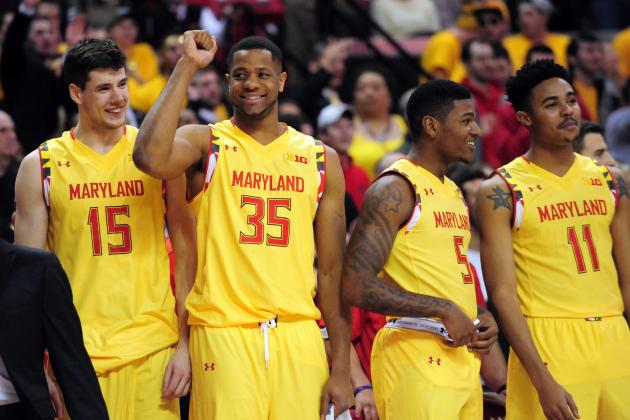

Demetrius Jackson (6’1″), Steve Vasturia (6’5″), V.J. Beachem (6’8″), Bonzie Colson (6’5″), Zach Auguste (6’10”)
London Perrantes (6’2″), Malcolm Brogdon (6’5″), Evan Nolte (6’8″), Anthony Gill (6’8″), Mike Tobey (7’1″)
Derryck Thornton (6’2″), Grayson Allen (6’3″), Brandon Ingram (6’9″), Amile Jefferson (6’9″), Chase Jeter (6’10”)
Josh Perkins (6’0″), Eric McClellan (6’3″), Kyle Wiltjer (6’10”), Domantas Sabonis (6’10”), Przemek Karnowski (7’1″)
Johnny Hill (6’3″), Rapheal Davis (6’5″), Vince Edwards (6’7″), Caleb Swanigan (6’9″), A.J. Hammons (7’0″)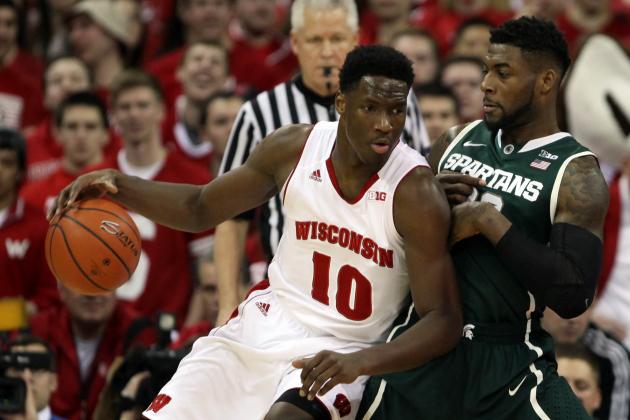
SG: Bronson Koenig (6’4″)
SF: Nigel Hayes (6’8″)
PF: Vitto Brown (6’8″)
C: Ethan Happ (6’9″)
Bench Bigs: Alex Illikainen (6’9″), Andy Van Vliet (6’11”), Aaron Moesch (6’8″), Charlie Thomas (6’8″)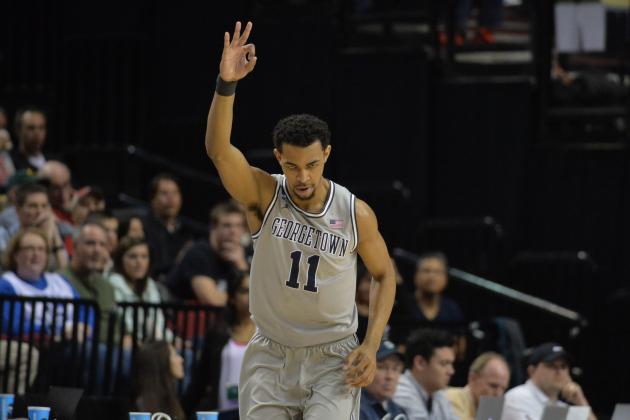
SG: L.J. Peak (6’5″)
SF: Paul White (6’8″)
PF: Isaac Copeland (6’9″)
C: Jessie Govan (6’10”)
Bench Bigs: Trey Mourning (6’9″), Bradley Hayes (7’0″)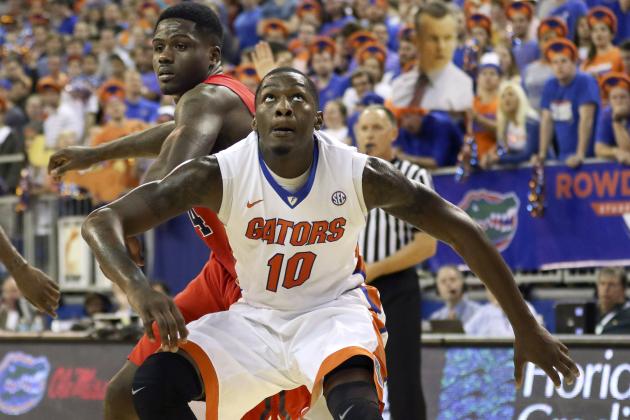
SG: Brandone Francis-Ramirez (6’5″)
SF: Devin Robinson (6’8″)
PF: Dorian Finney-Smith (6’8″)
C: John Egbunu (6’11”)
Bench Bigs: Schuyler Rimmer (6’10”), Kevarrius Hayes (6’9″), Keith Stone (6’8″), Alex Murphy (6’8″)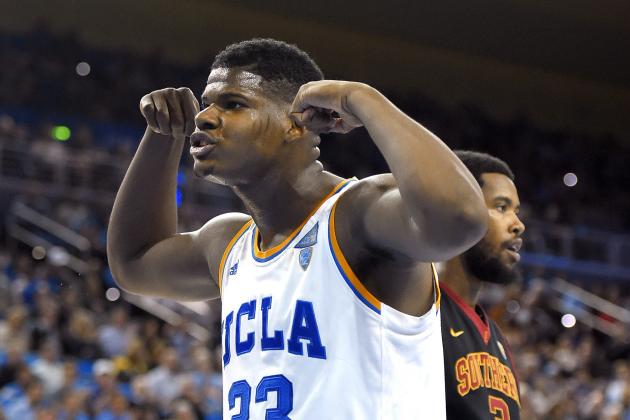
SG: Isaac Hamilton (6’5″)
SF: Jonah Bolden (6’10”)
PF: Tony Parker (6’9″)
C: Thomas Welsh (7’0″)
Bench Bigs: Gyorgy Goloman (6’11”), Alex Olesinski (6’10”), Ikenna Okwarabizie (6’9″)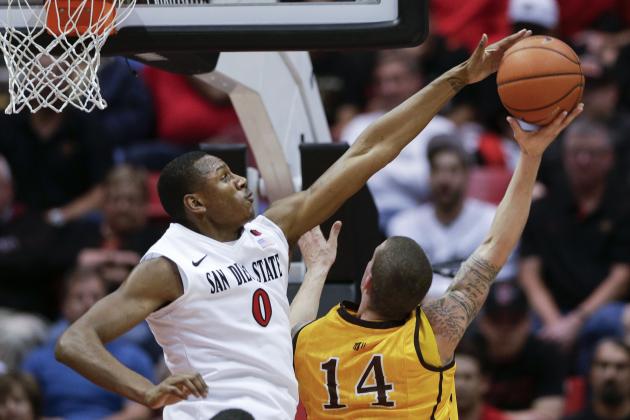
SG: Jeremy Hemsley (6’4″)
SF: Winston Shepard (6’8″)
PF: Malik Pope (6’10”)
C: Skylar Spencer (6’10”)
Bench Bigs: Angelo Chol (6’9″), Max Hoetzel (6’8″)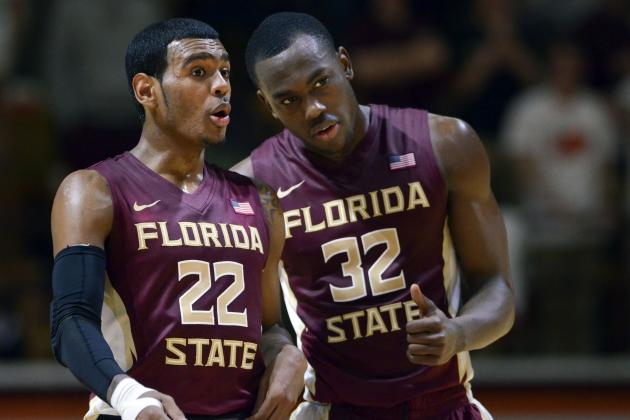
SG: Dwayne Bacon (6’7″)
SF: Montay Brandon (6’8″)
PF: Phil Cofer (6’8″)
C: Jarquez Smith (6’9″)
Bench Bigs: Michael Ojo (7’1″), Boris Bojanovsky (7’3″), Jean Marc Christ Koumadje (7’4″)
SG: Wayne Selden (6’5″)
SF: Sviatoslav Mykhailiuk (6’8″)
PF: Perry Ellis (6’8″)
C: Cheick Diallo (6’9″)
Bench Bigs: Jamari Traylor (6’8″), Carlton Bragg (6’9″), Landen Lucas (6’10”), Hunter Mickelson (6’10”)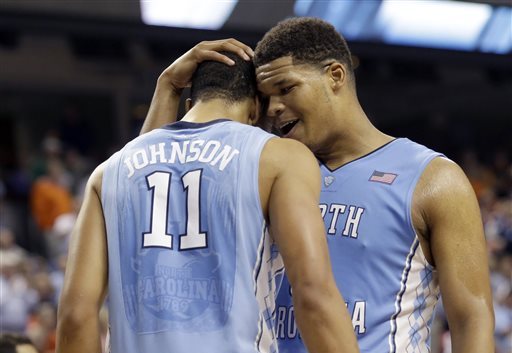
SG: Justin Jackson (6’8″)
SF: Theo Pinson (6’6″)
PF: Brice Johnson (6’9″)
C: Kennedy Meeks (6’9″)
Bench Bigs: Isaiah Hicks (6’8″), Joel James (6’10”)
Pinson: 19.4 AST%, 13.2 TRB%, 2.7 STL%, 1.8 BLK%, .116 WS/40, 3.0 OBPM, 5.1 DBPM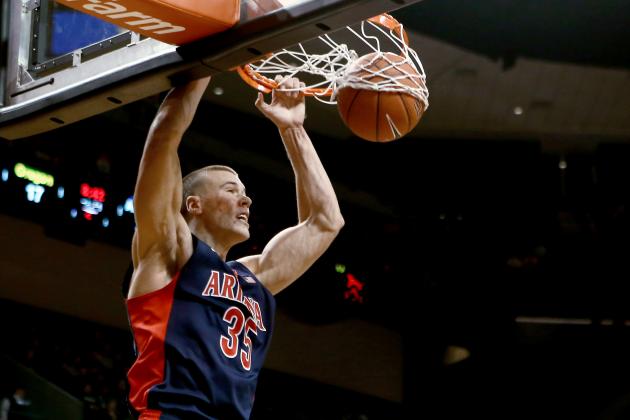
SG: Allonzo Trier (6’4″)
SF: Ray Smith (6’8″)
PF: Ryan Anderson (6’9″)
C: Kaleb Tarczewski (7’0″)
Bench Bigs: Dusan Ristic (7’0″), Mark Tollefsen (6’9″), Chance Comanche (6’10”)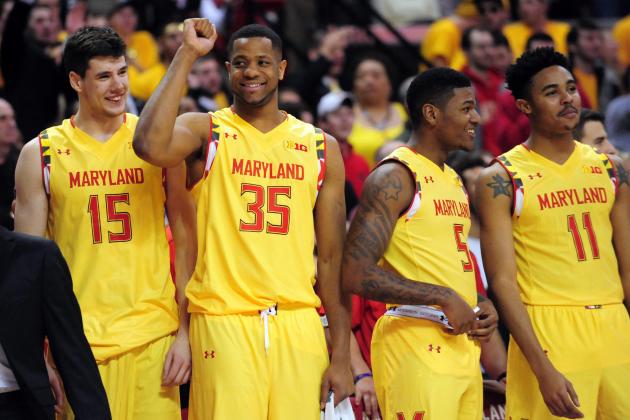
SG: Rasheed Sulaimon (6’5″)
SF: Jake Layman (6’9″)
PF: Robert Carter (6’9″)
C: Diamond Stone (6’11”)
Bench Bigs: Michal Cekovsky (7’1″), Damonte Dodd (6’11”), Ivan Bender (6’9″)
This entry passed through the Full-Text RSS service – if this is your content and you’re reading it on someone else’s site, please read the FAQ at fivefilters.org/content-only/faq.php#publishers.